Tag: biography
In good company
18 October 2013 | This 'n' that

Portrait of an artist: Joel Lehtonen, sketched by Pietro Annigoni in Florence, 1931. Picture: literary archives of the Finnish Literature Society
Margaret, Countess of Snowdon (Princess Margaret, 1930–2002), Joel, Master of Putkinotko (1881–1934), and Philip, Duke of Edinburgh (born 1921) met in the same museum case in Florerence in October, when an exhibition of the work of the artist Pietro Annigoni (1910–1988) was opened.
The morganatic juxtaposition of the English royals and the Finnish writer is based on Annigoni’s reputation as one of the best-known portraitists of the 20th century, in whom the royal courts of England and Denmark, among others, placed their trust.
Joel Lehtonen, author of the novel Putkinotko (‘Hogweed Hollow’, the name also refers to a place) and classic of Finnish literature, is included on account of the fact that, in celebrating his fiftieth birthday in Florence in 1931, he partied throughout the night with students from the Accademia di Belle Arte ‘to the rhythm of an excellent Chianti’.
Also present was the young Piero Annigoni, who, in a cellar restaurant, took out his working tools. A red-chalk portrait of Lehtonen was the result, along with a series of dancing girls drawn in Indian ink. ‘It was five in the morning before I realised,’ Lehtonen wrote back to Finland.
Lehtonen had already spent a year in Italy in 1908 translating Boccaccio’s The Decameron, which, to his annoyance, was censored by the publisher. He published a volume of poetic prose based on his Italian experiences, Myrtti ja alppiruusu (‘The myrtle and the rhododendron’), of which one section is dedicated to Florence, that ‘glittering, passionate city of the spirit’.
Young Florentine artists were used to world-class artists. When the poet Dylan Thomas visited the city in the 1940s, the poet and author Luigi Berti – an acquaintance of Lehtonen’s – complained that ‘poets travelling in Italy no longer give themselves the airs of “milords” – behave like Lord Byron.’ Lehtonen, however, was able to party stylishly and thoroughly in a way that appears to have pleased the sons of Florence.
As he set off on the return journey to Finland, Lehtonen wrote to his wife: ‘An embarrassing day is over’, ‘I am in fine spirits! Heat the sauna.’ He brought with him Annigoni’s works, which are now in the archive of the Finnish Literature Society.
The curator of the Florence exhibition found more sketches of Lehtonen in the Museo Annigoni: in the current show, they are placed alongside sketches of Princess Margaret and Prince Philip.
The opening of the exhibition, in the premises of the Ente Cassa di Risparmio di Firenze, was attended by 300 of the city’s elite. It was as if the nobility of the portraits of the Uffizi art gallery had stepped out of their frames to honour Annigoni, whose paintings continued the traditions of the renaissance. The Corriere della Sera and La Repubblica gave prominent coverage to the event. The young politician and Florence mayor Matteo Renzi said in his speech that in northern Italy Annigoni’s significance to art is parallel to that of Olivetti to industry.
Annigoni’s early portraits of Lehtonen are shown in a section entitled Opere rare o inedited. The 240-page catalogue also includes brief description of Lehtonen as a writer and an account of that night in Florence in 1931.
Translated by Hildi Hawkins
A rare bird from Fancyland
20 August 2013 | Reviews

Bead-covered curlew, 1960. Height ca. 115 cm, Collection Kakkonen. Photo: Niclas Warius
Harri Kalha:
Birger Kaipiainen
Helsinki: Suomalaisen Kirjallisuuden Seura (The Finnish Literature Society), 2013. 249 p., ill.
(Summaries in Swedish and English)
ISBN 978-952-222-457-6
€46, hardback
Ceramics confectioner. Degenerate aristocrat. Ornamental criminal. These epithets can be found in Birger Kaipiainen, a new, full-length study of the ceramic artist by art historian Harri Kalha.
Throughout his artistic career Birger Kaipiainen (1915–1988) worked with forms, subjects and methods that were unfamiliar in the field of traditional ceramics, at least in mid-20th-century Finland, and made use of fantasy and ornament. As a ‘porcelain painter’ he showed little interest in the technical challenges of clay – although in his ceramic creations Kaipiainen explored three-dimensional form, montage, colour, texture and the tactile dimensions of the medium. More…
Panu Rajala: Hirmuinen humoristi. Veikko Huovisen satiirit ja savotat [The awesome humorist. The satires and logging sites of Veikko Huovinen]
16 May 2013 | Mini reviews, Reviews
 Hirmuinen humoristi. Veikko Huovisen satiirit ja savotat
Hirmuinen humoristi. Veikko Huovisen satiirit ja savotat
[The awesome humorist. The satires and logging sites of Veikko Huovinen]
Helsinki: WSOY, 2012. 310 p.
ISBN 978-951-0-38952-2
€38, hardback
Author Veikko Huovinen (1927–2009) became widely popular with the publication of his novel Havukka-ahon ajattelija (‘The backwoods philosopher’, 1952). Huovinen, who trained as a forest ranger, spent his life mainly in north-eastern Finland and did not like publicity; the author and theatre scholar Panu Rajala deals with Huovinen’s biography relatively briefly, focusing on a thematic analysis of Huovinen’s extensive and thematically rich output of novels and short stories. He places the the books in the context of Finnish literature, and also examines their film and television adaptations. Huovinen was an intellectually conservative, a highly original humorist; among his books are satirical biographies of Hitler and Stalin. His prose fiction, set in the natural wilds of the North, has not always won the appreciation of pro-modernist critics. Huovinen’s lively and original language is not easy to translate – for example, his only work published in English is a beautiful documentary novel Puukansan tarina (‘Tale of the forest folk’), which received a Finlandia Prize nomination in 1984.
Translated by David McDuff
Jukka Sarjala: Kotomaamme outo Suomi [Finland, our strange homeland]
4 April 2013 | Mini reviews, Reviews
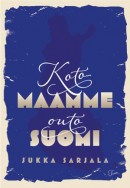 Kotomaamme outo Suomi
Kotomaamme outo Suomi
[Finland, our strange homeland]
Helsinki: Teos, 2013. 264 p.
ISBN 978-951-851-440-7
€ 27, paperback
Jukka Sarjala, ex-director general of the Finnish National Board of Education and bibliophile, is the author of several works of non-fiction, mainly in the field of history. In this book he focuses on the phenomena and events that characterised early twentieth-century Finland, some of them rather peculiar. In a couple of dozen chapters written in a humorous and conversational style the author does not conceal his own opinions, for example, on the foolishness of politicians. Much of the writing is devoted to the era of Finnish independence and the Finnish Civil War, as well as to episodes from political history, such as the story of the attempt to import to the newly independent country a German-born prince as King of Finland, the vagaries of the political far right and far left, the recruitment of Finnish Reds into the British Army – and the horse that gave rise to a small rebel movement. Sarjala draws many fascinating portraits of early twentieth-century figures, for example the utopian socialist Matti Kurikka and the founder of a party that in some ways anticipated the present-day True Finns [Perussuomalaiset], the talkative politician Veikko Vennamo (1913–1997). Although the book lacks footnotes and a bibliography, it demonstrates its author’s extensive reading.
Translated by David McDuff
Happy days, sad days
28 February 2013 | Reviews
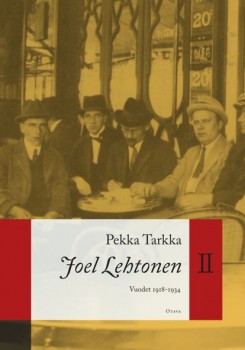 Pekka Tarkka
Pekka Tarkka
Joel Lehtonen II. Vuodet 1918–1934
[Joel Lehtonen II. The years 1918–1934]
Helsinki: Otava, 2012. 591 p., ill.
ISBN 978-951-1-25924-4
€38.50, hardback
A well-meaning bookseller’s idealism, inspired by Tolstoyan ideology, is brought crashing down by the laziness and ingratitude of the man hired to look after his estate: conflicts between the bourgeoisie and the ‘ordinary folk’ are played out in heart of the Finnish lakeside summer idyll in Savo province.
Taking place within a single day, the novel Putkinotko (an invented, onomatopoetic place name: ‘Hogweed Hollow’) is one of the most important classics of Finnish literature. Putkinotko was also the title of a series (1917–1920) of three prose works – two novels and a collection of short stories – sharing many of the same characters [here, a translation of ‘A happy day’ from Kuolleet omenapuut, ‘Dead apple trees’, 1918] .
In 1905 Joel Lehtonen bought a farmstead in Savo which he named Putkinotko: it became the place of inspiration for his writing. With an output that is both extensive and somewhat uneven, the reputation of Joel Lehtonen (1881–1934) rests largely on the merits of his Putkinotko, written between 1917 and 1920. More…
Far from the madding crowd
21 February 2013 | Articles, Non-fiction
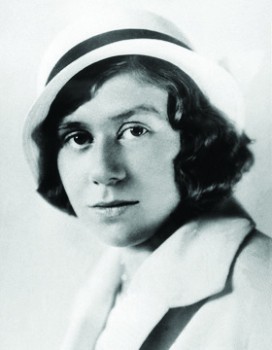
Saima Harmaja (1913–1937). Photo: WSOY
‘I don’t belong to the crowd,’ the young Saima Harmaja wrote in her diary in 1933. Her work as a poet was for her a vocation that superseded everything else. In her diaries she often speaks as a sociable young woman, with a delicious sense of humour, but her best poems seriously explore love, and death which cast its shadow over her. A selection of her poems – the best of which have made her a Finnish classic – is now published in English for the first time
In her diary the young poet claimed: ‘I think I would die if I could not write.’ What Harmaja shared with the poets of the early part of the twentieth century who influenced her was the private and personally experienced nature of poetry itself, rather than the realisation of any current aesthetic programme.
Harmaja is one of those poets whose works have passed through the hands of readers from decade to decade. She is also a prototype of the poet of her generation: gifts that led to the expectation of a brilliant career, a life that was brought to a tragic end by tuberculosis, leaving just five years of work as a poet. More…
Figuring out father
18 October 2012 | Extracts, Non-fiction
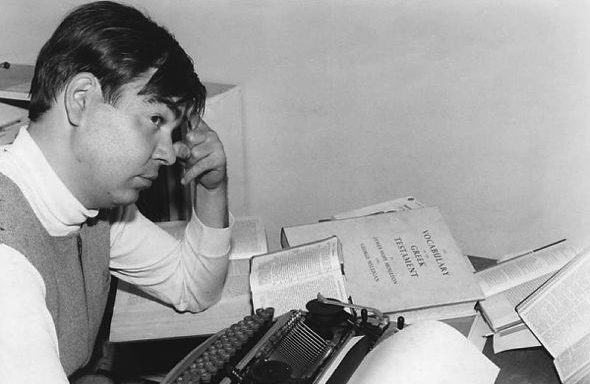
Pentti Saarikoski (1960s). Photo: Otava/Nikolai Naumoff
The poet and translator Pentti Saarikoski (1937–1983) jotted in one of his journals: ‘I have never cared for relatives.’ Thirty years after his death one of his five children set out to find out what his father was like – by reading almost all he left behind in writing; these comments by Saska Saarikoski are from his Sanojen alamainen (‘Servant of words’, Otava, 2012), an annotated selection of Pentti Saarikoski’s thoughts
Pentti Saarikoski died when I was 19. I remember complaining to my mother that I had not yet even got to know my dad. My mother answered: You’ve got plenty of time, the real Pentti is to be found in his books. She did not know how right she was, for she meant Pentti’s published books, not knowing what a mountain of texts awaited its readers in the archives of the Finnish Literature Society. Pentti had written everything down in his diaries.
I read Nuoruuden päiväkirjat (‘Youthful diaries’), published soon after Pentti’s death in 1983, as soon as they were published, but when his Prague, Drunkard’s and Convalescent’s Diaries appeared around the millennium, they went straight on to my library shelf. I was not terribly interested in the ramblings of Pentti’s alcoholic years.
It could be that my reluctance was influenced by the cool attitude I had adopted from early on in relation to my father. Other people were welcome to consider him a genius; for me, he was a father who did not telephone, write or come to see my football matches. I didn’t call him, either; for me, it was a father’s job. More…
Jouni K. Kemppainen: Onnellinen mies. Arto Paasilinnan elämä [A happy man. The life of Arto Paasilinna]
21 June 2012 | Mini reviews, Reviews
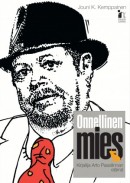 Onnellinen mies. Arto Paasilinnan elämä
Onnellinen mies. Arto Paasilinnan elämä
[A happy man. The life of Arto Paasilinna]
Espoo: Paasilinna, 2012. 307 p.
ISBN 978-952-5856-37-8
€ 28, hardback
Arto Paasilinna (born 1942) is an uncanny phenomenon. For Finns he is a popular, prolific author of picaresque novels – which in the 1970s, 80s and 90s were praised by the critics, while the books he produced later received less acclaim, though most of them have sold tens of thousands of copies. Paasilinna’s best-known novel is Jäniksen vuosi (The Year of the Hare, 1975). In Europe – particularly in France and Italy – he is considered to be a major natural philosopher. However, the charming social man of the world was capable of turning into a violent ruffian; journalist Jouni K. Kemppainen’s fluent biography highlights every aspect of the author’s character. The book describes the development of a boy from a poor northern Finnish family to an international best-selling author (his works have been translated into more than 40 languages) and introduces interesting correspondence between the author and his publisher. Kemppainen emphasises some recurring themes in Paasilinna’s work: relations between humans and animals, travelling. In 2009 the author suffered a head injury while drinking, and lost his memory almost completely. The title of his latest, thirty-fifth novel is Elävänä omissa hautajaisissa (‘Alive at his own funeral’, 2009). The impression that this biography leaves on the reader’s mind is a picture of a now gentle man who delights in the fact that he has accomplished all that he is reported to have accomplished – and in that he managed to survive.
Translated by David McDuff
Erik Kruskopf: Alvar Aalto kuvataiteilijana [Alvar Aalto as visual artist]
14 June 2012 | Mini reviews, Reviews
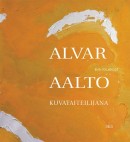 Alvar Aalto kuvataiteiljana
Alvar Aalto kuvataiteiljana
[Alvar Aalto as visual artist]
Suomentanut [Translated from Swedish by]: Leena Vallisaari
Helsinki: Finnish Literature Society, 2012. 215 p., ill.
ISBN 978-952-222-294-7
€ 45, hardback
Finland’s most famous architect Alvar Aalto (1898–1976) is also well-known as a designer, but his activity as a visual artist has remained less familiar. Aalto was interested in drawing and painting at a young age. He also received some training from professional artists, and before graduating as an architect he supported himself by producing vignettes, illustrations and cartoons. His best works are considered to date from the late 1910s and early 1920s, and were diverse in themes and technique. After the Second World War he painted exclusively abstract works in which the originality of his vision is most clearly expressed. He also produced sculpture, especially wood reliefs, which are related to his work as a designer. Aalto saw his visual art as being closely connected with his architecture, a branch of it. The book contains many reproductions of Aalto’s art and demonstrates his masterful, form-seeking creativity. Summaries in Swedish and English.
Translated by David McDuff
Rosemarie Tsubaki: Pehr Kalm, suomalainen Amerikan löytäjä [Pehr Kalm, the Finnish discoverer of America]
8 June 2012 | Mini reviews, Reviews
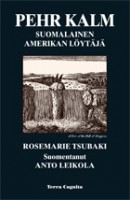 Pehr Kalm, suomalainen Amerikan löytäjä
Pehr Kalm, suomalainen Amerikan löytäjä
[Pehr Kalm, the Finnish discoverer of America]
Alkuteos [original work, in Italian]: Il Viaggio di Pehr Kalm in Nord-America 1747–1751. Dissertation, University of Genoa, 2002/2003
Suomennos [Translated by]: Anto Leikola
Helsinki: Terra Cognita, 2011. 199 p., ill.
ISBN 978-952-5697-49-0
€ 25, paperback
The Finnish naturalist and pastor Pehr (in Finnish, Pietari) Kalm (1716–79), a pupil of the famous Swedish botanist Carl von Linné, was professor of economics and rector of Turku Academy, the only university in Finland during its period under Swedish rule. Kalm gained his international reputation as a result of his account of a scientific expedition he made to north America in 1747–51, which was translated into several languages. The trip was the first scientific expedition to the New World, and Kalm paid close attention to nature as well as the economics, living conditions and culture of both colonists and native inhabitants. One of his aims was the gathering of plants for use in Sweden. Of the plants he brought back a species of hawthorn, creeper vine and purple-flowered raspberry are still cultivated in Finland. The German scholar Rosemarie Tsubaki’s doctoral thesis examines Kalm’s writings and complements it with material from other sources where Kalm’s notes have been lost. The Finnish translation is furnished with an introduction and expertly translated by Anto Leikola, Professor Emeritus of History of Science.
Translated by David McDuff
C.L. Engel. Koti Helsingissä, sydän Berliinissä. C.L. Engel. Hemmet i Helsingfors, hjärtat i Berlin [C.L. Engel. Home in Helsinki, heart in Berlin]
23 February 2012 | Mini reviews, Reviews
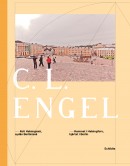 C.L. Engel. Koti Helsingissä, sydän Berliinissä. C.L. Engel. Hemmet i Helsingfors, hjärtat i Berlin
C.L. Engel. Koti Helsingissä, sydän Berliinissä. C.L. Engel. Hemmet i Helsingfors, hjärtat i Berlin
[C.L. Engel. Home in Helsinki, heart in Berlin]
Tekstit [Texts by]: Matti Klinge, Salla Elo, Eeva Ruoff
Valokuvat [Photography]: Taavetti Alin & Risto Törrö
Översättning [Translations from Finnish into Swedish]: Ulla Pedersen Estberg
Helsingfors: Schildts, 2012. 140 p., ill.
ISBN 978-951-50-2183-0
€ 31.50, hardback
The life and works of the German architect Carl Ludvig Engel (1778–1840) are portrayed in four articles by specialists in Finnish history, the history of Helsinki and the history of gardens. Engel spent almost 24 years in Helsinki, transforming it with his architectural designs. For eleven of those years, he and his family lived in a house surrounded by a large garden, both of them his own creations. Looking for work, the young Engel finally found it in the tiny northern town that was pronounced the new capital of the Grand Duchy of Finland in 1812 – both Tsar Alexander I and his successor, Nikolai I, favoured him. From 1816 onwards he designed more than twenty neo-classical buildings, among them nationally important landmarks: the Cathedral, the City Hall, the National Library and the University. Despite his mostly rewarding job as a highly regarded city planner, Engel found Helsinki cold, small and quiet, and he constantly longed for his native Berlin, which he never saw again. However, his flourishing garden gave him great pleasure. Richly illustrated with photographs, the book gives the reader an thorough and interesting picture of this city-changing man and his era.
Allan Tiitta: Sinisten maisemien mies. J.G. Granön tutkijantie 1882–1956 [The man of blue landscapes. A biography of J.G. Granö, 1882–1956]
9 February 2012 | Mini reviews, Reviews
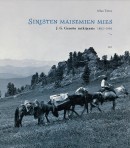 Sinisten maisemien mies. J.G. Granön tutkijantie 1882–1956
Sinisten maisemien mies. J.G. Granön tutkijantie 1882–1956
[The man of blue landscapes. A biography of J.G. Granö, 1882–1956]
Kuvatomittaja [Picture editor]: Taneli Eskola
Helsinki: Finnish Literature Society, 2011. 541 p., ill.
ISBN 978-952-222-292-3
€ 44, hardback
The man of blue landscapes describes the life and work of the Finnish geographer Johannes Gabriel Granö (1882–1956), whose career also reflected Finland’s development as a modern state. Granö was a scientific explorer, writer, a pioneer of Finnish photographic art and a professor of geography at the universities of Tartu (Estonia), Helsinki and Turku. In Estonia he applied scientific method to the study of local history and from Tartu brought the tradition of urban research. Granö spent much of his youth in Omsk in western Siberia, where his father worked as a priest among displaced and deported Finns and Estonians. From 1906 to 1916 Granö made an expedition to Mongolia and the Altai mountains, but his fieldwork remained unfinished when the 1917 revolution broke out; the area was then closed to Western scholars for 70 years. Among Granö’s most important works are the classic travel book Altai, vaellusvuosina nähtyä ja elettyä (‘The Altai, seen and experienced during my years of travel’, 1921) and his methodological masterpiece Puhdas maantiede (‘Pure geography’, 1930). In it Granö outlined a theory of landscapes, and the book was a pioneering work ahead of its time: landscape was examined in terms of the relation between human beings and their environment, as the sum of all the senses.
Translated by David McDuff
Panu Rajala: Naisten mies ja aatteiden. Juhani Ahon elämäntaide [A ladies’ man of ideas. Juhani Aho’s art of living]
26 January 2012 | Mini reviews, Reviews
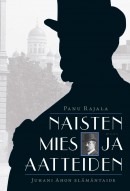 Naisten mies ja aatteiden. Juhani Ahon elämäntaide
Naisten mies ja aatteiden. Juhani Ahon elämäntaide
[A ladies’ man of ideas. Juhani Aho’s art of living]
Helsinki: WSOY, 2011. 441 p., ill.
ISBN 9789510374412
€ 35, hardback
Of Juhani Aho (1861–1921) it is said that he created what have proved to be the most enduring descriptions of how traditional Finland began to be modernised; his most famous book is the novella Rautatie (‘The railway’, 1884) which portrays the arrival of the railway in the Finnish countryside. This new biography also shows once again how many international influences can be found in the work of Aho, who is often called a national author. Aho was active in student politics, and as a newspaper journalist. He was nominated for the Nobel Literature Prize twelve times, but for various reasons, some of them connected with language politics, lobbying on his behalf was not successful. Aho developed Finnish prose, bringing to it realism and impressionistic style. His experiences during a visit to Paris in 1889 form the basis of his novel Yksin (‘Alone’), which caused a stir in part because of its erotic flavour. This book by the author and literary scholar Panu Rajala provides a versatile insight into Aho’s personal story, the world of his ideas, his opinions on art, and his complex relationships.
Translated by David McDuff
Helene Schjerfbeck. Och jag målar ändå [Helene Schjerfbeck. And I still paint]
16 December 2011 | Mini reviews, Reviews
 Helene Schjerfbeck. Och jag målar ändå. Brev till Maria Wiik 1907–1928
Helene Schjerfbeck. Och jag målar ändå. Brev till Maria Wiik 1907–1928
[Helene Schjerfbeck. And I still paint. Letters to Maria Wiik 1907–1928]
Utgivna av [Edited by]: Lena Holger
Helsingfors: Svenska Litteratursällskapet i Finland; Stockholm: Bokförlaget Atlantis, 2011. 301 p., ill.
ISBN (Finland) 978-951-583-233-7
ISBN (Sweden) 978-91-7353-524-3
€ 44, hardback
In Finnish:
Helene Schjerfbeck. Silti minä maalaan. Taiteilijan kirjeitä
[Helene Schjerfbeck. And I still paint. Letters from the artist]
Toimittanut [Edited by]: Lena Holger
Suomennos [Translated by]: Laura Jänisniemi
Helsinki: Suomalaisen Kirjallisuuden Seura, 2011. 300 p., ill.
ISBN 978-952-222-305-0
€ 44, hardback
This work contains a half of the collection of some 200 letters (owned by the Signe and Ane Gyllenberg’s foundation), until now unpublished, from artist Helene Schjerfbeck (1862–1946) to her artist friend Maria Wiik (1853–1928), dating from 1907 to 1928. They are selected and commented by the Swedish art historian Lena Holger. Schjerfbeck lived most of her life with her mother in two small towns, Hyvinge (in Finnish, Hyvinge) and Ekenäs (Tammisaari), from 1902 to 1938, mainly poor and often ill. In her youth Schjerfbeck was able to travel in Europe, but after moving to Hyvinge it took her 15 years to visit Helsinki again. In these letters she writes vividly about art and her painting, as well as about her isolated everyday life. Despite often very difficult circumstances, she never gave up her ambitions and high standards. Her brilliant, amazing, extensive series of self-portraits are today among the most sought-after north European paintings; she herself stayed mostly poor all her long life. The book is richly illustrated with Schjerfbeck’s paintings (mainly from the period), drawings and photographs.

 The poet and translator Pentti Saarikoski (1937–1983) was a legend in his own lifetime, a media darling, a public drinker who had five children with four women. His oeuvre nevertheless encompasses 30 works, and his translations include Homer and James Joyce. The journalist Saska Saarikoski (born 1963) has finally read all that work – in search of the father whom he seldom met. The following samples are from his annotated selection of Pentti Saarikoski’s thoughts over 30 years, Sanojen alamainen (‘Servant of words’, Otava, 2012; see
The poet and translator Pentti Saarikoski (1937–1983) was a legend in his own lifetime, a media darling, a public drinker who had five children with four women. His oeuvre nevertheless encompasses 30 works, and his translations include Homer and James Joyce. The journalist Saska Saarikoski (born 1963) has finally read all that work – in search of the father whom he seldom met. The following samples are from his annotated selection of Pentti Saarikoski’s thoughts over 30 years, Sanojen alamainen (‘Servant of words’, Otava, 2012; see